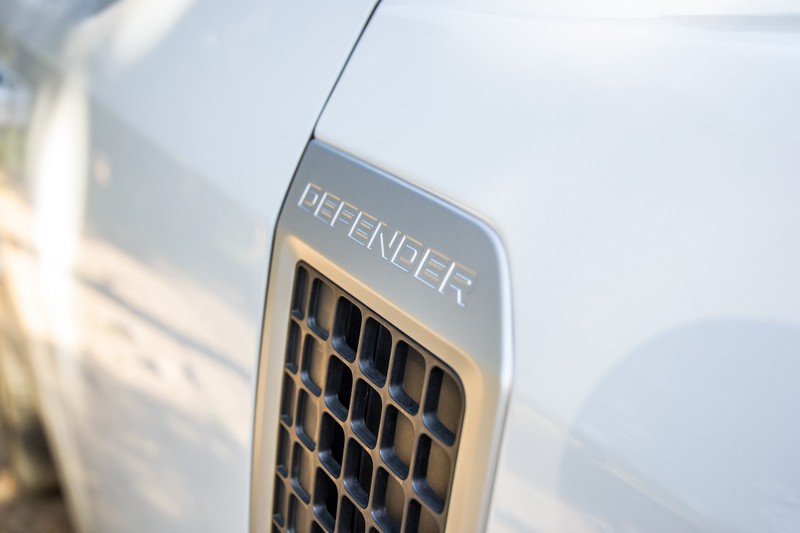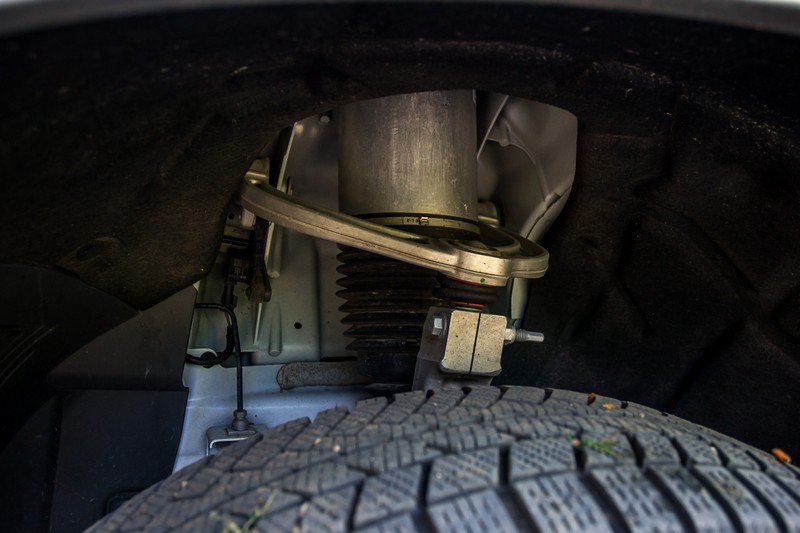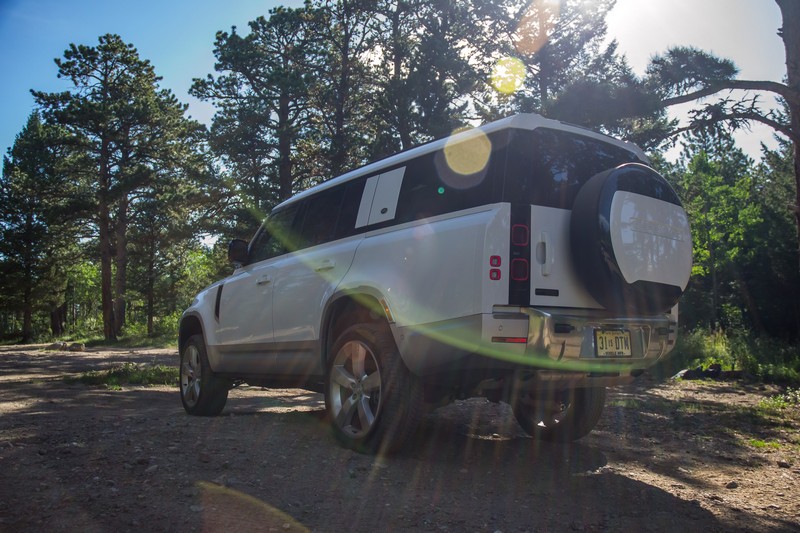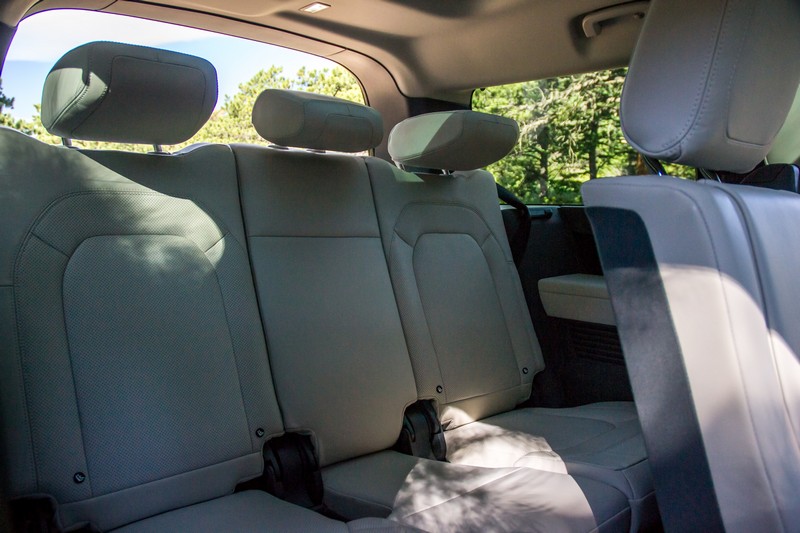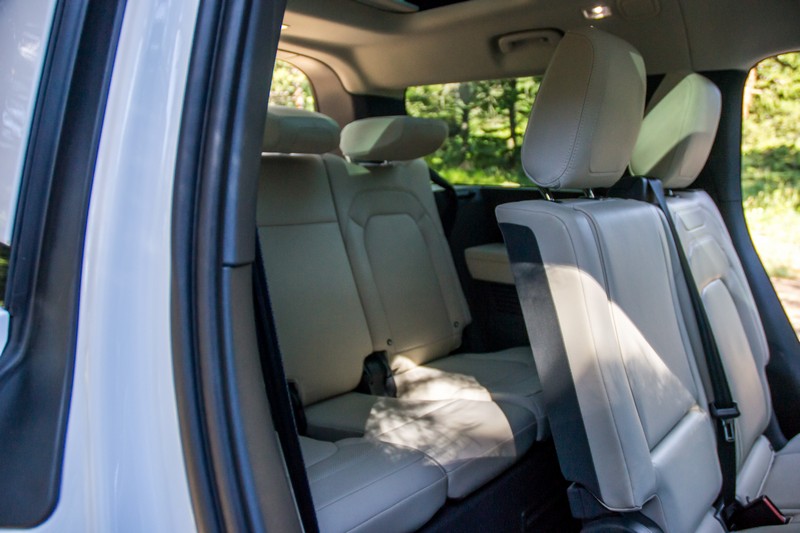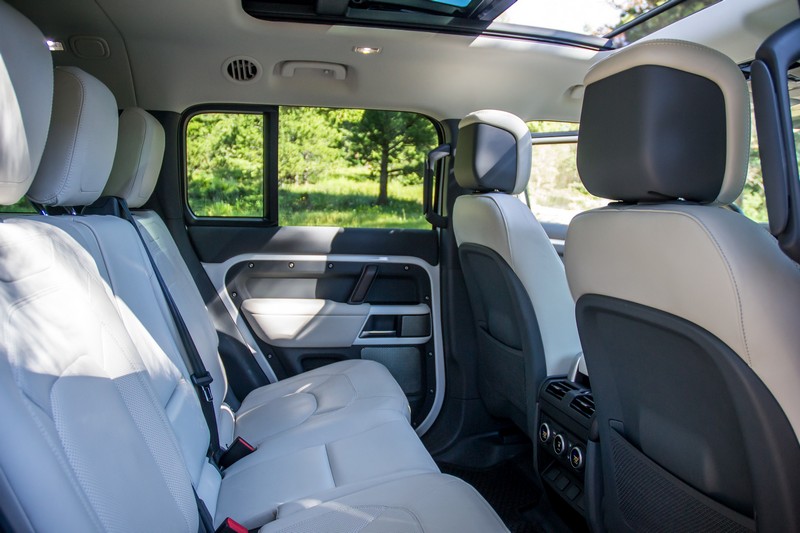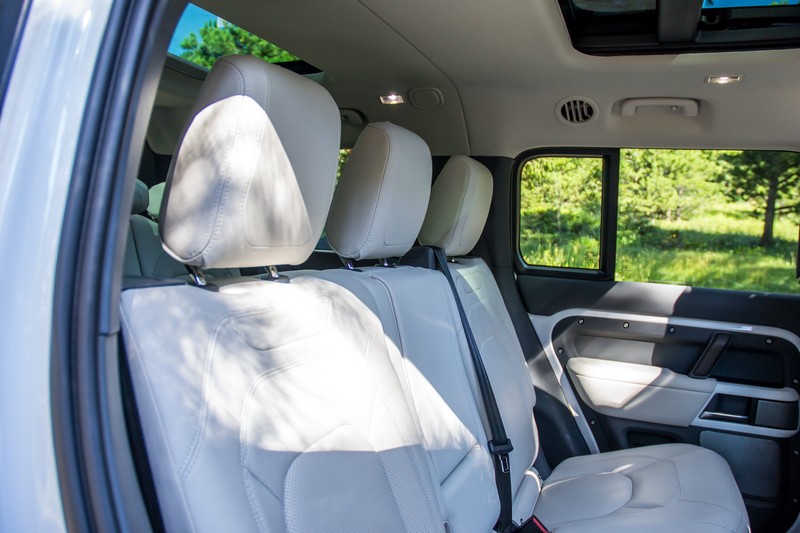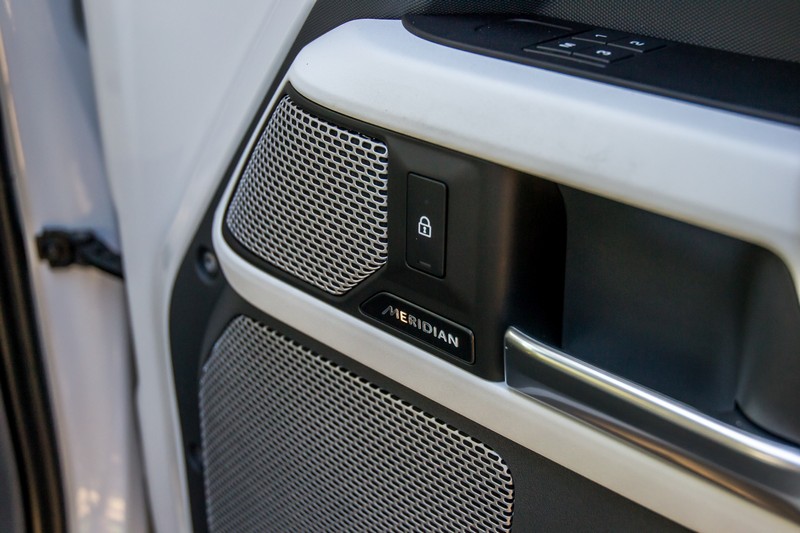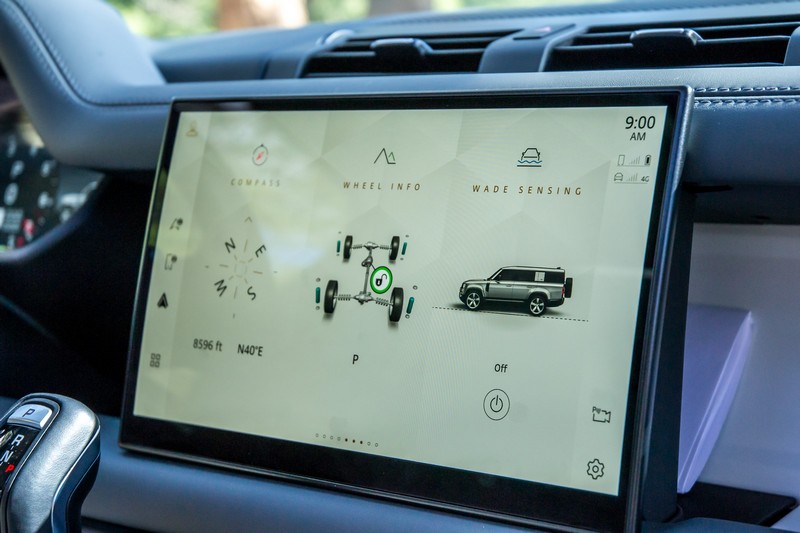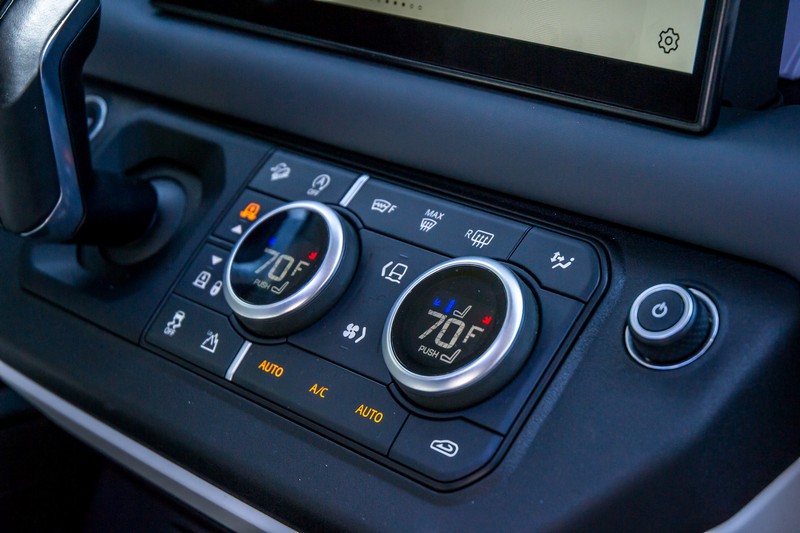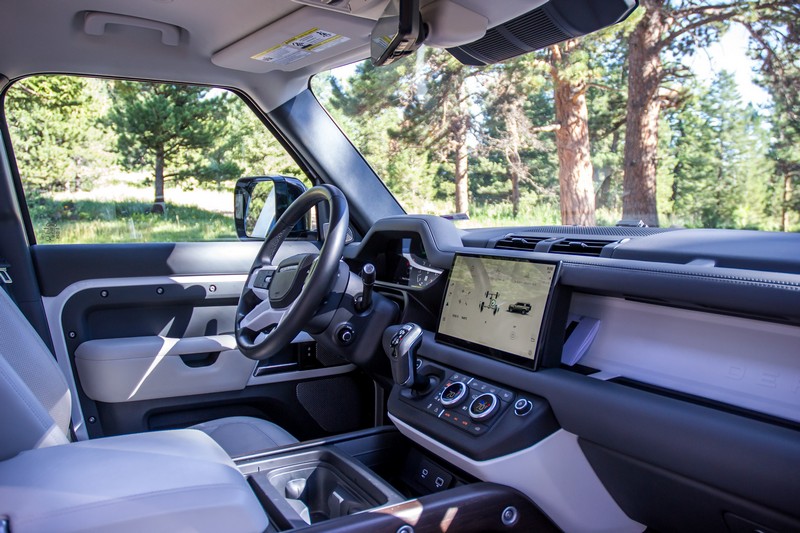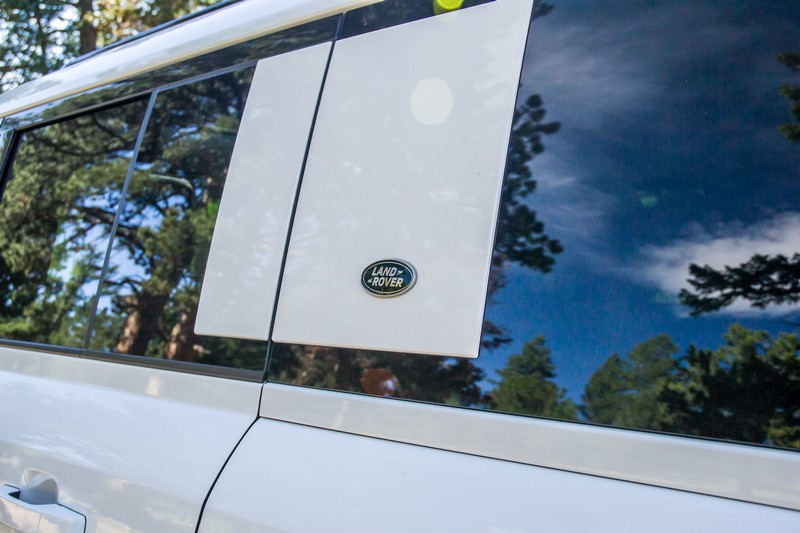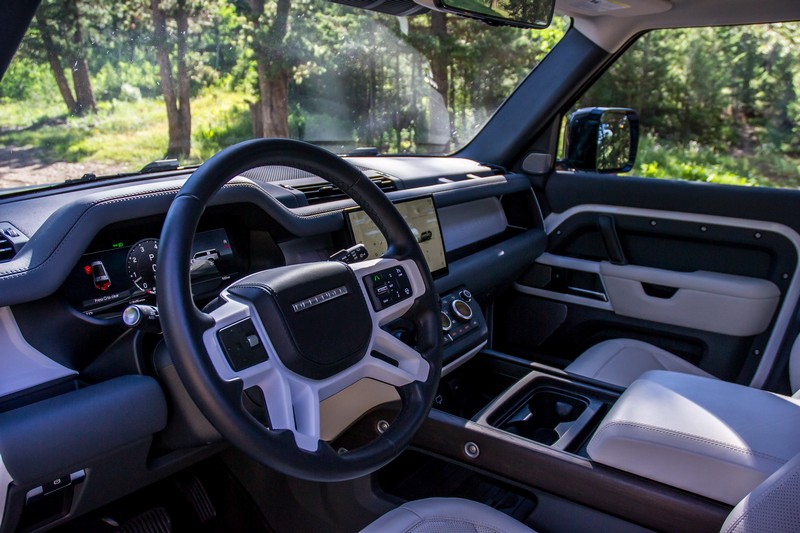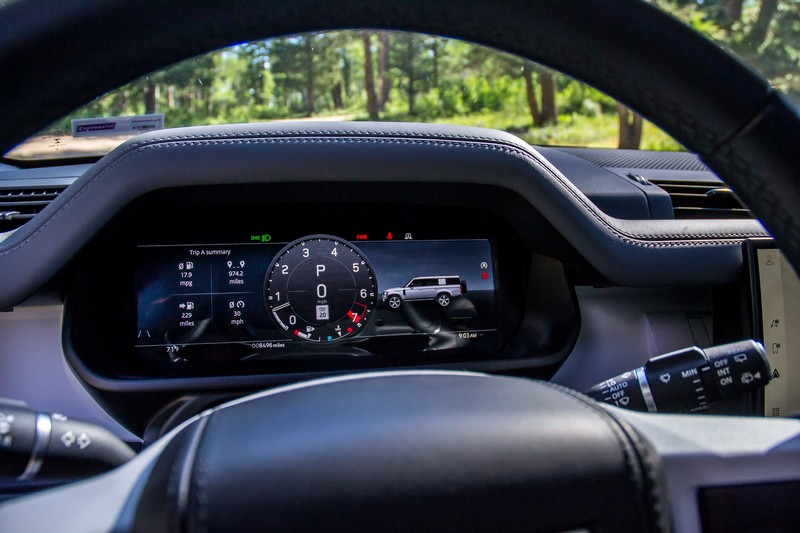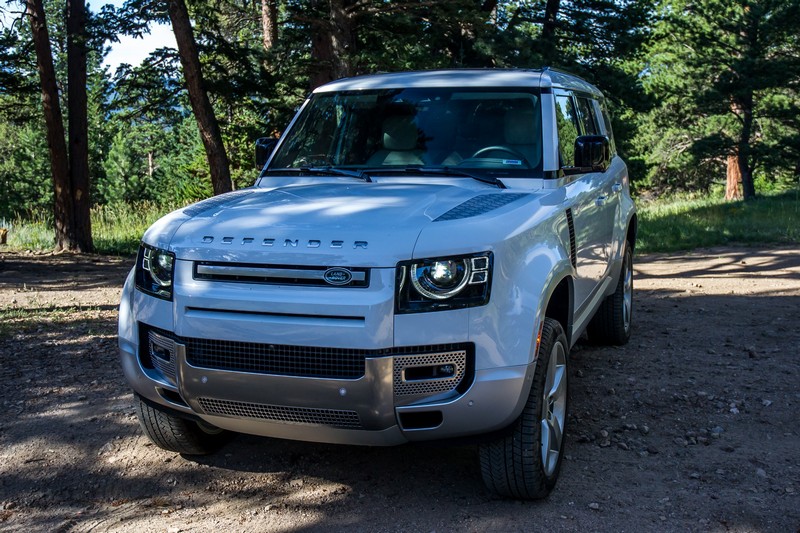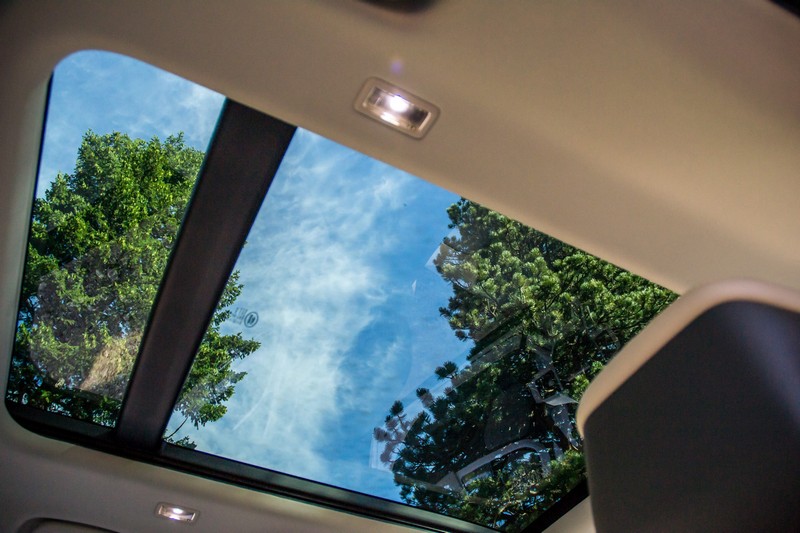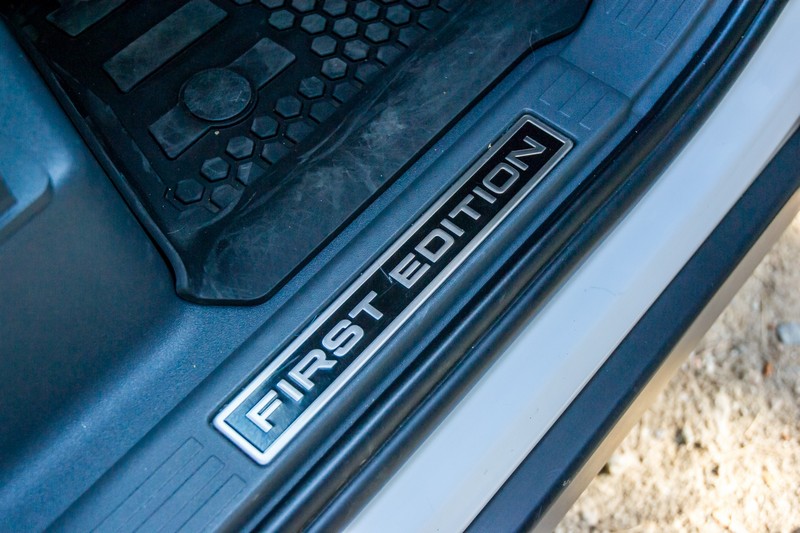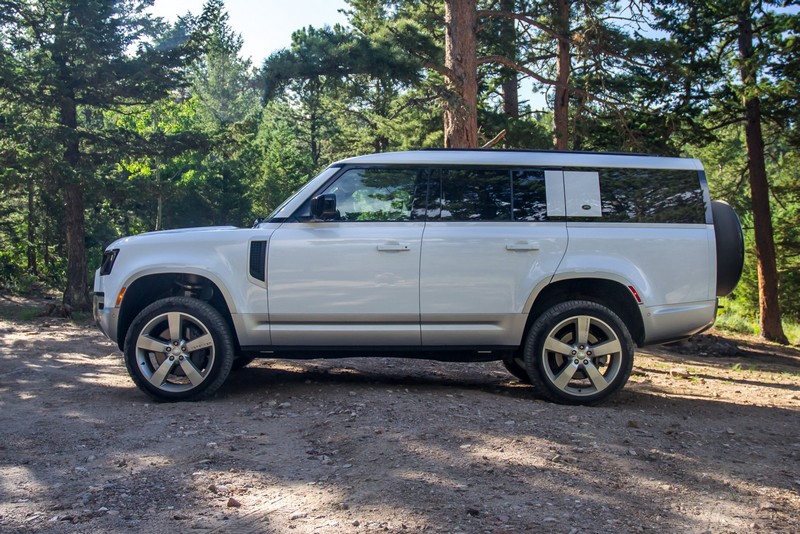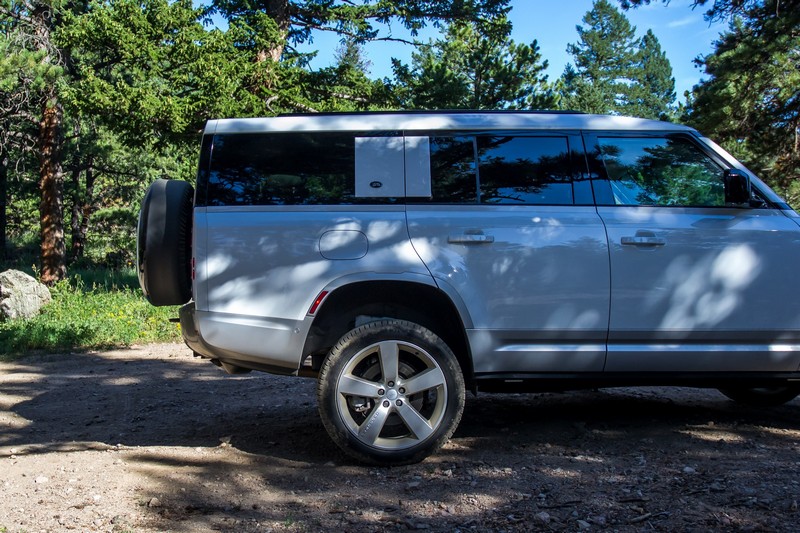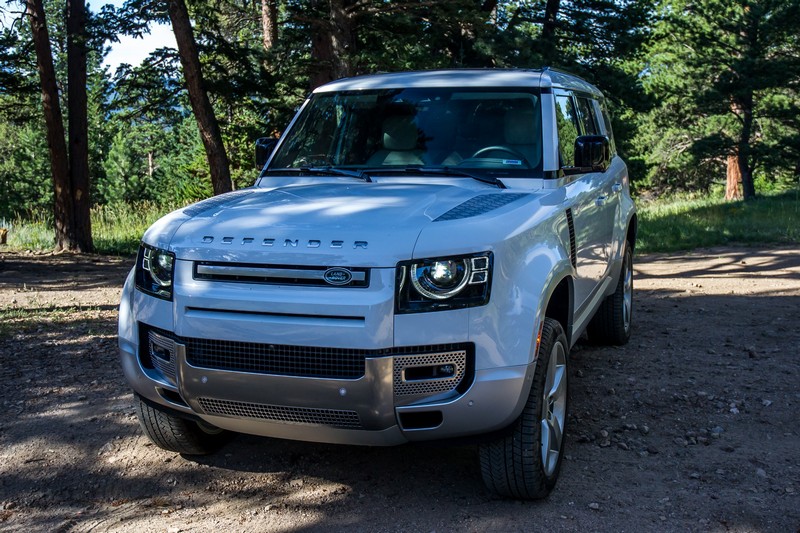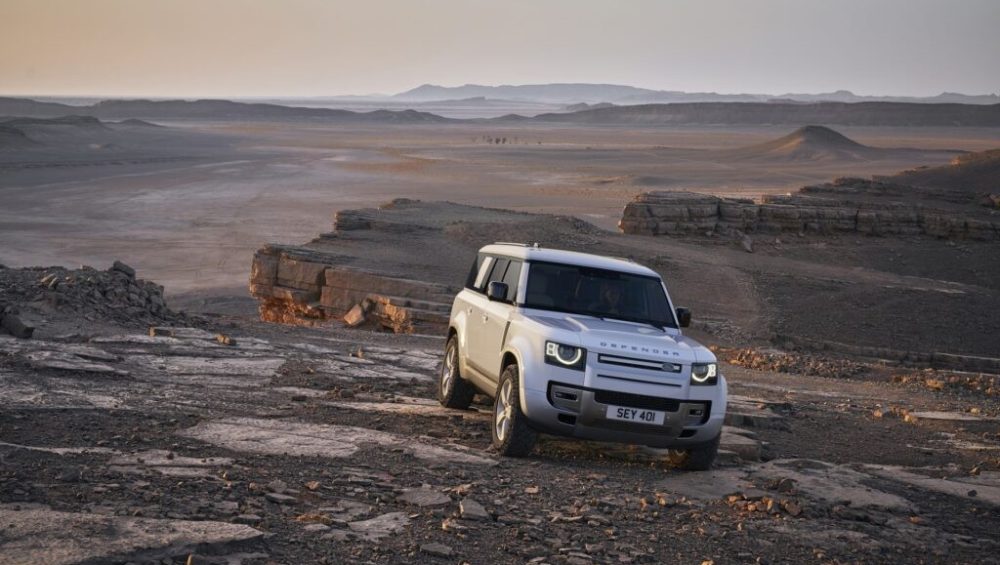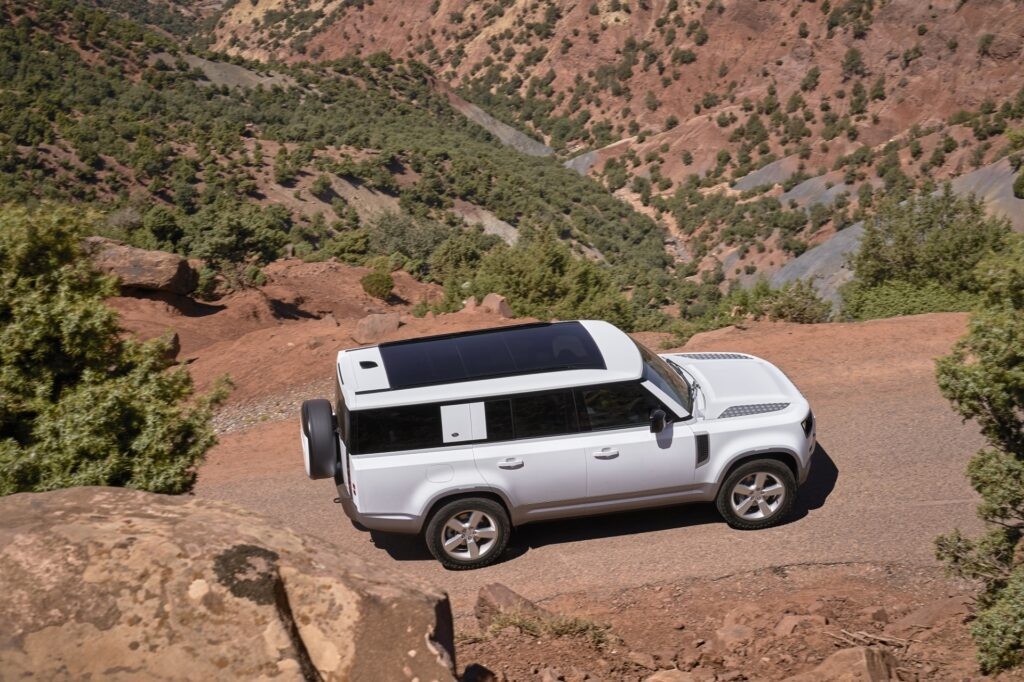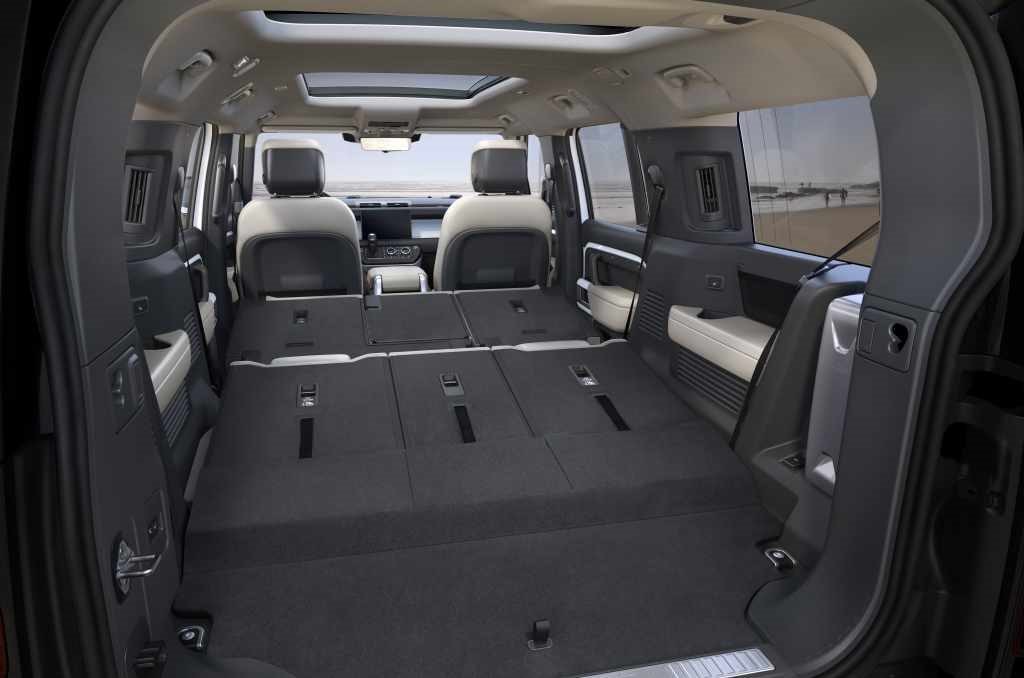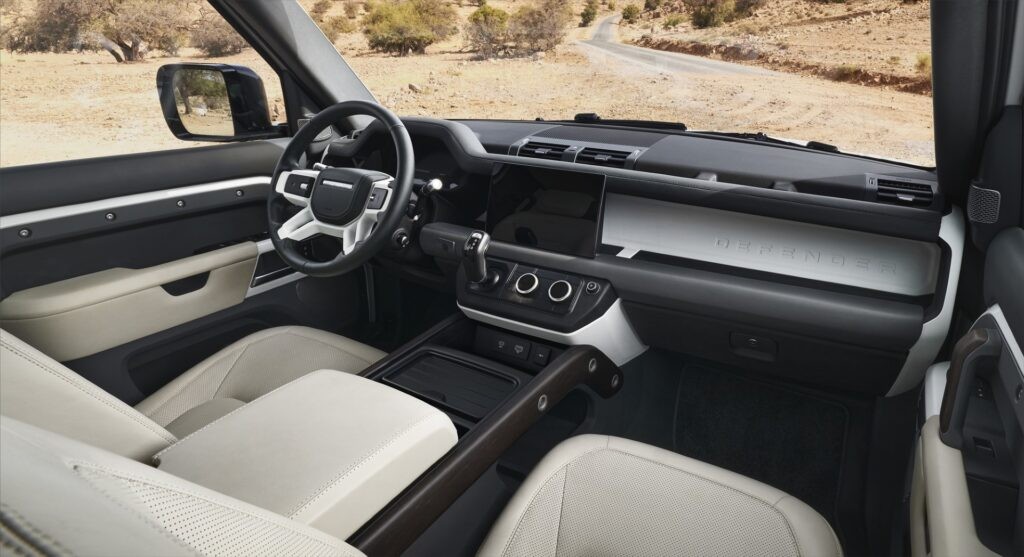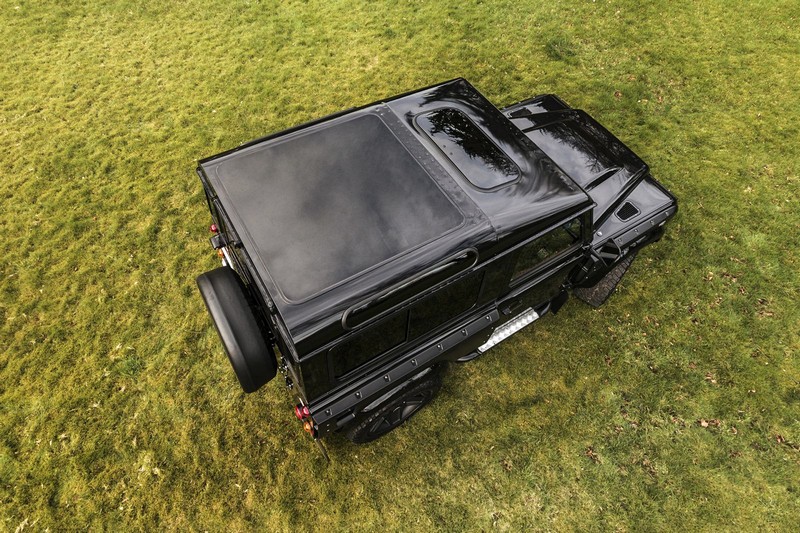When the Land Rover Defender initially hit the market, I found myself less than enamored. I had taken it for a test drive years ago, but without much context or experience with its competitors, the experience left me underwhelmed. Plus, the driving experience didn’t leave a lasting impression. With a winter setting in Colorado, I wasn’t able to truly put its legendary off-road capabilities to the test.
Fast forward to the present, and I find myself seeking redemption with the Defender. It’s akin to returning for a rematch in dodgeball during gym class — a chance to get things right this time. Armed with a Defender 130 (equipped with winter tires in August, no less), I’m ready to tackle the trails and finally uncover the magic hidden within this iconic SUV.
Design and Visual Appeal
Let’s start by dissecting the visual aesthetic of the Defender 130. The nomenclature signifies its extended length, providing more room in the rear for cargo and the additional third row commonly found in Defenders beyond the 110 model. The design, however, raises some concerns. The elongated rear end gives the Defender 130 a peculiar sense of perpetual motion in the wrong direction, as if it’s about to tip backward. Thankfully, the rest of the design is more tasteful, adhering to Land Rover’s signature understated elegance.
The front fascia prominently nods to the Defender’s heritage, with its classic lighting and grille elements. The squared-off rear, high beltlines, and rectangular rear window (due to the elongation) evoke a sense of nostalgia. Overall, the design is cohesive, and the wheels, characterized by their simplicity, avoid being overly ostentatious.
The First Edition model, as seen here, exudes a refined demeanor compared to more flamboyant configurations. Land Rover now offers a V8 variant with sportier cues, while various off-road-oriented options and material selections cater to different tastes.
Interior Comfort and Technology
Inside, the story remains consistent across the Defender lineup. While you’ll encounter luxurious leather and wood accents, along with comfortable seats, you’ll also find robust (read: rugged) plastics and exposed rivets that underline its off-road pedigree. These rivets, while appearing performative, actually contribute to a tactile experience that has grown on me over time.
Land Rover’s interface has evolved significantly. Once deemed fiddly, slow, and cumbersome, it now integrates touch and physical controls harmoniously. The intuitive push-and-rotate dial for seat adjustments is a standout, fostering muscle memory rather than menu navigation.
The Defender 130 shines in its role as a people and cargo hauler. It competes admirably with vehicles like the Grand Wagoneer in terms of cargo capacity, even extending creature comforts to third-row passengers. As someone of average height, I find the third-row seating quite accommodating. Heated seats and a panoramic skylight ensure a pleasant experience, and the inclusion of USB-C ports acknowledges the needs of modern travelers.
Beyond the capacious trunk, the Defender offers numerous storage solutions. I particularly appreciate the shelf at the front of the cabin, which secures items effectively even during off-road excursions.
On-Road and Off-Road Performance
Taking the Defender off-road is where it truly shines. Equipped with air suspension (an option in my First Edition test model), the ride quality on trails is unparalleled. Even Ford’s Raptor models would envy the degree of comfort offered by the air suspension. For consistent off-road use, traditional springs might be preferred due to their reliability, but the air suspension delivers unmatched poise and adaptability.
The air suspension offers additional advantages. It adjusts itself dynamically, particularly in 4x4i mode, Land Rover’s intelligent drive mode setting. This system excels at analyzing terrain, ensuring a smooth ride and preventing damage to the vehicle’s exterior. The self-leveling feature proves useful for camping and cargo loading, enhancing convenience further.
Off-road prowess translates into on-road stability, with the air suspension playing a pivotal role. While the ride is more cushioned on asphalt, it remains impressive, befitting a vehicle with a price tag of $92,725 (inclusive of options and delivery).
Under the hood of my tester was a mild-hybrid 6-cylinder turbo engine, producing 395 horsepower and 406 lb-ft of torque. These figures grant the Defender ample power, making it feel unruffled in various scenarios. The Meridian sound system complements the driving experience with its neutral sound profile and decent adjustability.
Final Verdict
While the Defender is a well-rounded vehicle, it stands out as a true multi-purpose solution. This modern take on a legendary off-roader remains relevant and compelling years after its reimagining. Unlike its British roots, the Defender doesn’t rely on nostalgic narratives of conquering treacherous terrains. It lets its performance speak for itself, far removed from Land Rover’s UK origins.
Pros:
- Exceptional off-road capabilities
- On-road luxury that rivals German competitors
- Versatile space for both occupants and cargo
Cons:
- Polarizing aesthetics, especially in longer versions
- Comfortable but unsupportive seats
- Inconsistent adaptive cruise control
In a landscape of capable SUVs, the 2023 Land Rover Defender stands as a paragon of versatility and performance, embodying the spirit of an automotive icon.
